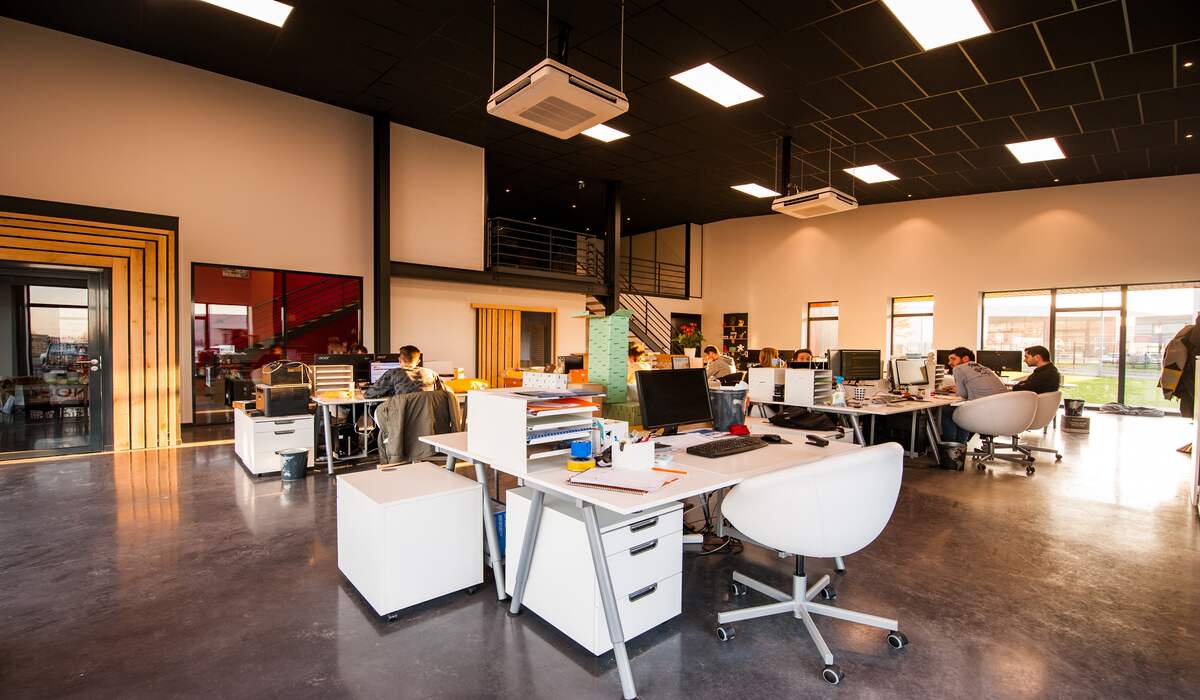Table of Contents
In today’s modern work culture, where individuals spend a significant portion of their day in office settings, investing in good office ergonomics is paramount. Ergonomics, the science of designing and arranging workspaces to fit the needs of individuals, plays a crucial role in promoting employee well-being, reducing discomfort, and enhancing productivity.
In this article, we will explore the benefits of investing in good office ergonomics, discuss common posture problems associated with office work, provide practical tips to improve posture.
What is Ergonomics?
Ergonomics focuses on optimising the interaction between individuals and their work environment to promote efficiency, comfort, and safety. It encompasses various factors, including workstation design, equipment selection, lighting, and employee behaviour.
By aligning these elements with the physical and cognitive capabilities of workers, ergonomics aims to create workspaces that reduce the risk of musculoskeletal disorders and enhance overall well-being and performance.
Common Posture Problems in the Office
Extended periods of desk work can lead to poor posture, causing strain on the muscles and joints. Some common posture problems are listed below.
Slouching
Sitting hunched over, with rounded shoulders and a forward head posture, can strain the neck, shoulders, and back.
Forward Head Posture
When the head juts forward, it places excessive strain on the neck and upper back, leading to muscle imbalances and discomfort.
Crossing Legs
Sitting with legs crossed for extended periods can affect blood circulation and create imbalances in the hips and pelvis.
Improper Monitor Height
A monitor placed too high or too low can result in neck strain, leading to discomfort and potential long-term issues.
Improving Posture in the Office
To promote better posture and reduce the risk of musculoskeletal problems, consider implementing the following practices:
Optimal Workstation Setup
Adjust your chair height to ensure your feet are flat on the floor, align your hips and knees at a 90-degree angle, and position the monitor at eye level to maintain a neutral neck position.
Supportive Seating
Invest in an ergonomic chair with adjustable features, including lumbar support, armrests, and seat depth adjustment.
Regular Movement and Breaks
Encourage regular breaks and incorporate stretching exercises to reduce muscle tension and stiffness. Implementing sit-stand desks can also provide opportunities for postural variation.
Proper Keyboard and Mouse Placement
Keep your keyboard and mouse at a height that allows your arms to rest comfortably and maintain a relaxed position.
Monitor Positioning
Position the monitor at arm’s length, directly in front of you, and at eye level to avoid straining your neck and eyes.
Together, these elements form part of an ergonomic assessment program, designed to reduce lost time due to injuries or absenteeism, reduce insurance premiums due to a decline in workers compensation claims, and to improve health and wellbeing of your employees.
It’s important to note that employers have a duty of care to provide a safe work environment for their employees, team and the general public. As such, along with assessing ergonomic risk factors, businesses are obliged to take out workers compensation insurance to protect their employees. By improving ergonomics, work-related insurance claims and the associated costs to the business often decrease.
Examples of Correct Ergonomic Setup
Implementing correct ergonomic setups can revolutionise workspaces and lead to significant improvements in employee health, productivity, and overall satisfaction. Read on for some examples of correct ergonomic setup.
Chair Ergonomics
An ideal ergonomic chair features adjustable height, lumbar support, and armrests, allowing users to customise their seating position for optimal comfort and support.
Standing Desk
Standing desks provide the flexibility to switch between sitting and standing positions, reducing the strain caused by prolonged sitting and promoting better posture.
Ergonomic Keyboard and Mouse
These specialised tools are designed to minimise strain on the hands, wrists, and arms, allowing for comfortable and efficient typing and navigation.
Monitor Mounts
Mounting monitors on adjustable arms allows for easy repositioning, enabling employees to find their ideal eye level and reduce neck strain.
Saving Money Through Ergonomics
Investing in good office ergonomics not only benefits employees but also has financial advantages for businesses. Here’s how.
Reduced Healthcare Costs
Ergonomic improvements can significantly reduce the risk of work-related musculoskeletal disorders, leading to fewer employee injuries, medical expenses, and workers’ compensation claims.
Enhanced Productivity
Ergonomic work environments promote employee comfort, which positively impacts productivity. By reducing discomfort, distractions, and fatigue, employees can focus more effectively on their tasks and achieve higher output.
Decreased Absenteeism and Turnover
A comfortable and supportive work environment reduces the likelihood of absenteeism due to musculoskeletal issues and improves overall employee satisfaction. This, in turn, lowers turnover rates, saving businesses recruitment and training costs.
Improved Quality of Work
When employees are physically comfortable and free from pain, they can devote their attention and energy to producing high-quality work, leading to increased customer satisfaction and business growth.
So, Who’s Up For Better Posture?
Investing in good office ergonomics is a win-win situation for both employees and businesses. By addressing common posture problems, implementing ergonomic practices, and providing employees with the tools and environments they need to thrive, companies can create healthier, more productive workspaces.
The financial benefits, including reduced healthcare costs, enhanced productivity, and decreased absenteeism, make the case for investing in good office ergonomics clear.
Prioritising employee well-being through ergonomic initiatives is an investment that pays dividends in the long run.


